1. Introduction
1.1. Abstract
Autonomous Vehicles are vehicles that employ driver assistance technologies to remove the need for a human operator within the vehicle. These new technologies into automation have been researched in contexts like the United States of America, Middle-Eastern Countries and some European Countries. Planners and architects are designing for these cities including autonomous vehicles for reasons like their environmental benefits and their implications on traffic congestion in their designs. This has forced big masses to think that the future is autonomous.
However, this project flips the new found belief and asks if the future really is autonomous? In doing so, we base our studies and counter proposals in the capital city of one of the biggest contributors to global pollution, Delhi. The intention of selecting Delhi as our study area is to understand if autonomous vehicles can adapt to traffic loads of the city and help the city function better. The study aims to assess the autonomous future for Delhi, which is one of the most congested and also the most polluted city of India and devise autonomous systems to adapt with the vehicular needs of the population.
1.2. Hypothesis
A major climate action to reduce air pollution in Delhi is through Autonomous transportation.
1.3. Objectives
The key objectives of this project are the following:
- Analyse transportation modes and patterns and study their implication on air pollution
- From local knowledge gather policies and methods in which the government combats air pollution in Delhi
- Find methods to reinforce public transport and encourage more people to use public transport
- Devise alternate mobility systems to implement through autonomous mobility to make transportation loads better
- Do a feasibility analysis of new mobility systems in terms of reduction in pollution in the city
1.4. Methodology
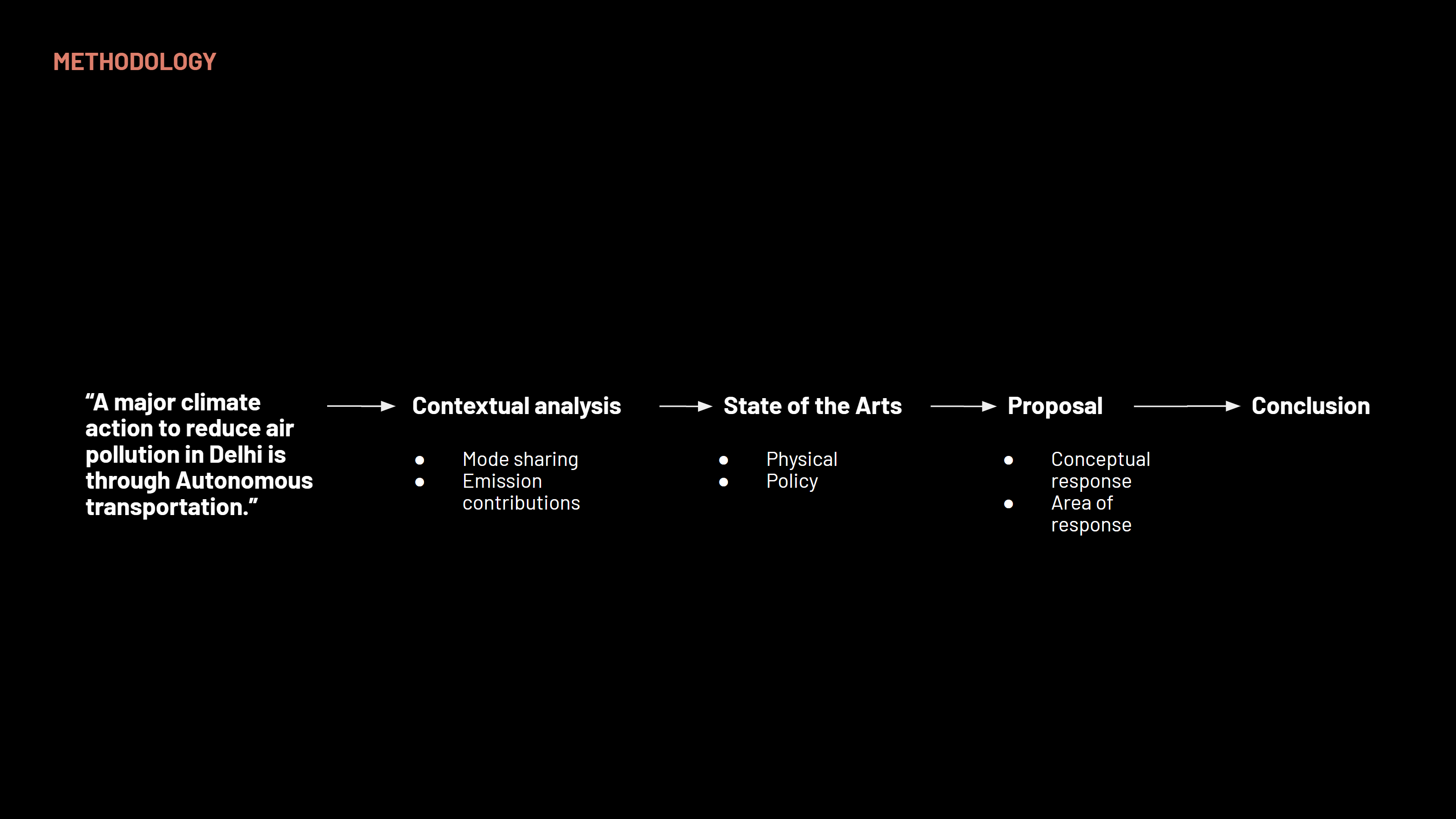
2. Contextual Analysis
2.1. Delhi: Capital of Pollution
Delhi, being the capital of India, has been increasing in population exponentially, especially in the last 20 years. As the population grew the limits of the city kept pushing the boundaries outward, making Delhi an agglomerate individual. With enlarged extents of the city, people were required to travel longer distances making their over travel time more and more. With the increased movement within the city, transportation infrastructure of Delhi is reinforced with multiple modes of well-connected public transport like the metro and the bus network and micro-mobility alternatives like rickshaws and taxis, which help a large fragment of the population to commute across long distances. Regardless of the various public modes of transport, the inhabitants of the city also choose to use their private vehicles like cars and motorbike to commute large distances. With the variety of vehicles on the roads of Delhi, the city is always prone to having hazardous air quality for majority of the year.
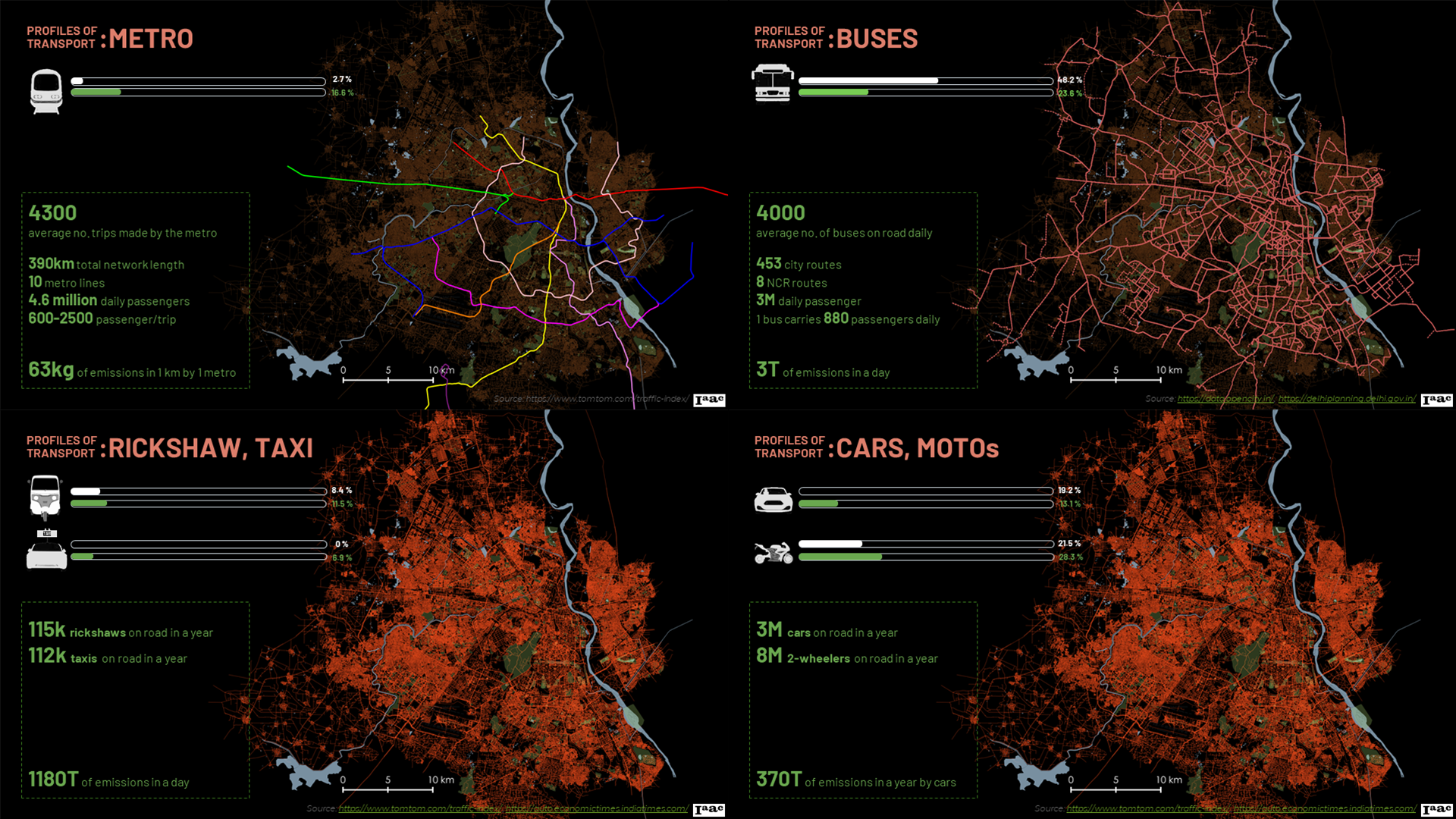
2.2. Delhi Modal Share
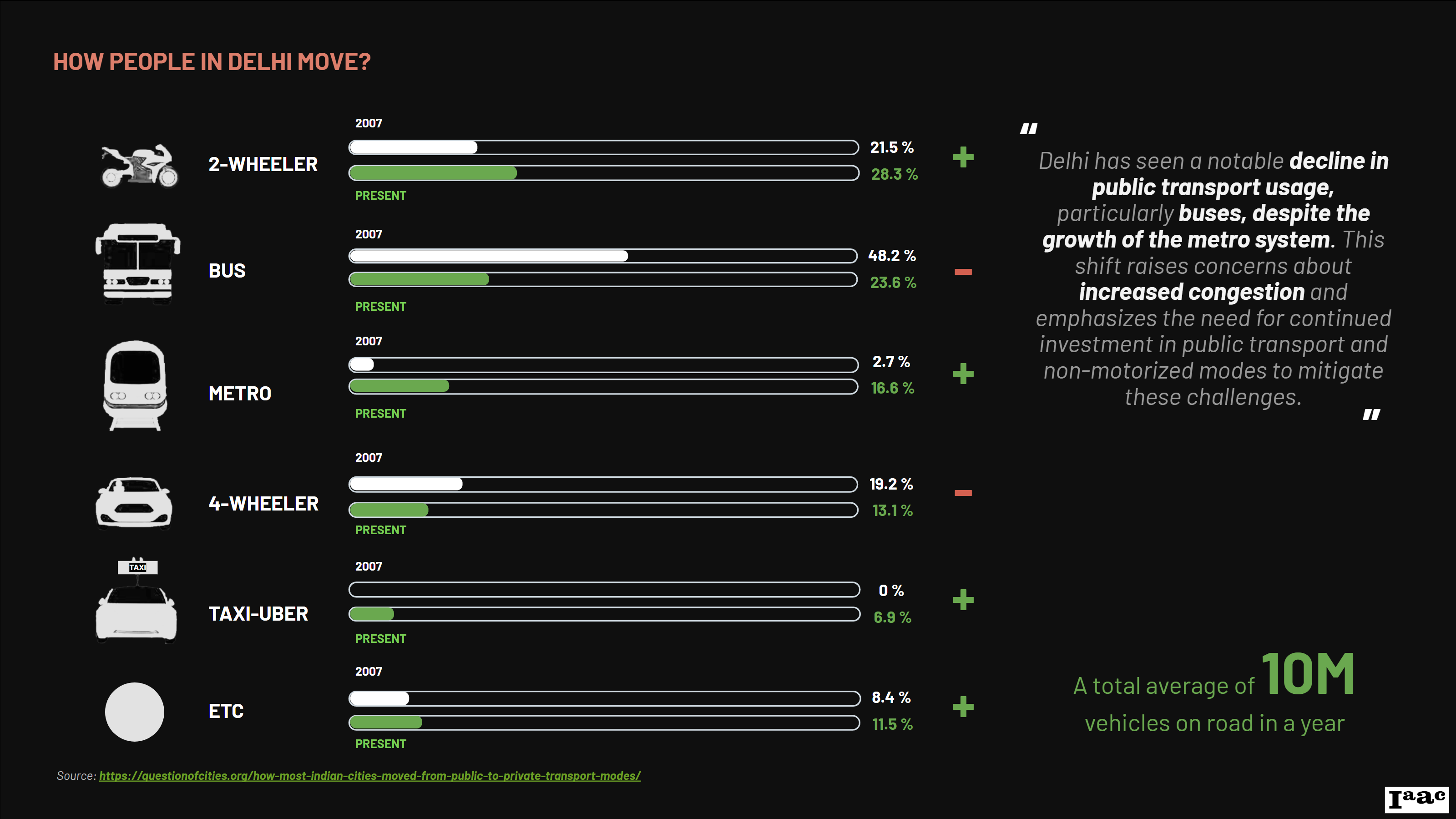
In Delhi, transportation is integral to daily life for its 31 million residents, navigating a city known for its daunting traffic congestion and severe air pollution. Ranked among the world’s most congested cities, Delhi’s transportation system faces immense challenges exacerbated by a high volume of vehicles. This congestion not only leads to frequent traffic jams but also contributes significantly to air pollution levels, consistently placing Delhi among the most polluted cities globally.
Mode Sharing in Delhi:
- Motorcycles and Two-Wheelers: Approximately 28% of Delhi commuters rely on motorcycles and two-wheelers, favored for their convenience and affordability. increasing from 20% in 2007
- Public Transport (Buses): Buses serve around 23% of commuters, down from nearly 50% in 2007, reflecting challenges amidst urban expansion and rising private vehicle ownership.
- Metro: The Delhi Metro has expanded significantly, catering to approximately 16% of commuters by 2018, offering a faster and more reliable alternative for longer distances and peak-hour travel.
- Private Cars: Despite constituting 13% of the mode share, down from nearly 19% in 2007
- Other Modes: Auto-rickshaws, cycle rickshaws, walking, and cycling fulfill niche transportation needs, contributing to the remainder of Delhi’s transportation mode share.
2.3. Mobility as a Major Pollutant
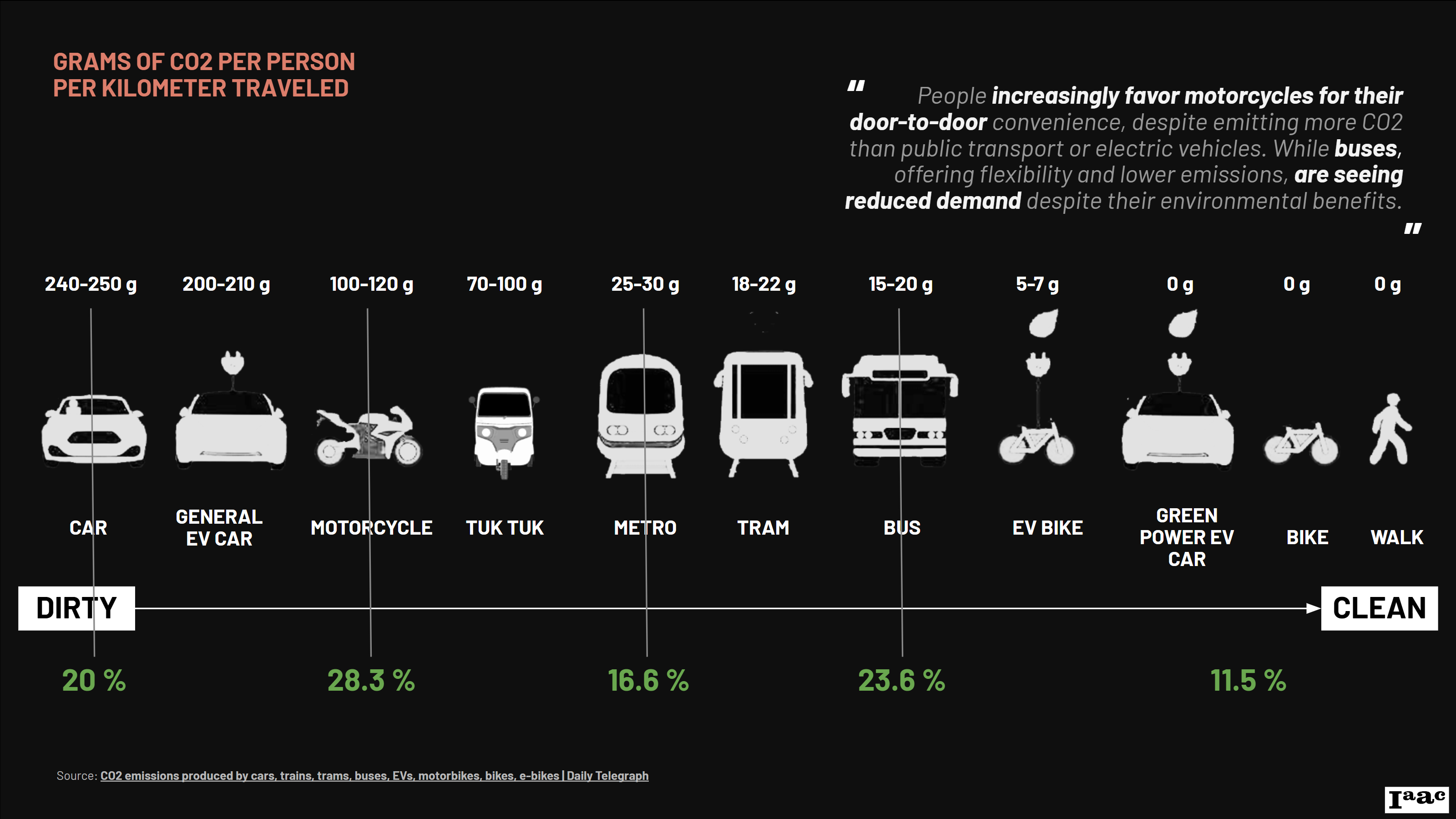
Transportation is a cornerstone of daily life for its 31 million residents, navigating a bustling city known for its persistent challenges with traffic congestion and air pollution. This complex urban landscape is shaped by diverse modes of transportation, each contributing uniquely to the city’s environmental footprint.
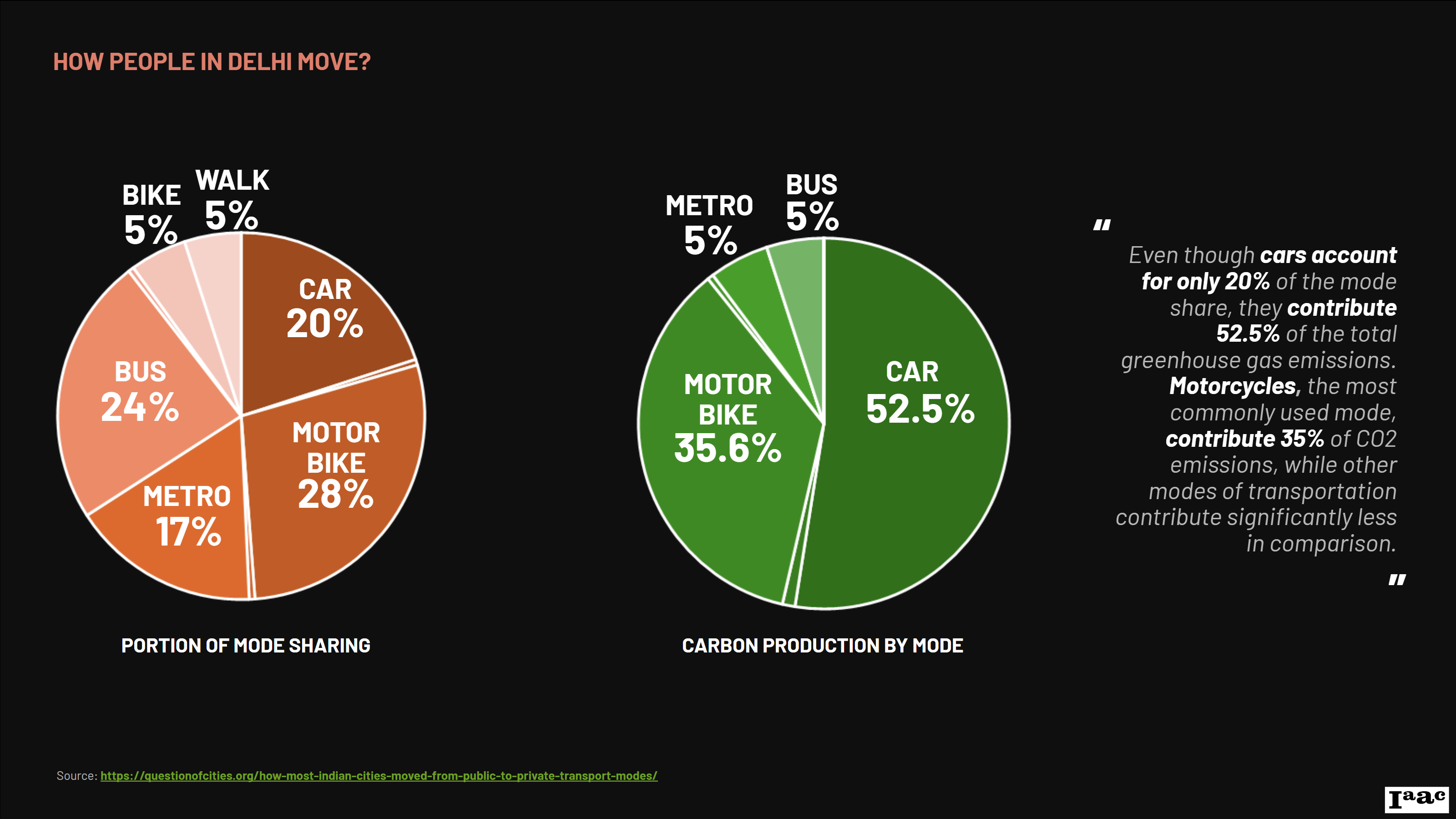
Emission Contributions by Mode:
- Cars: Despite comprising only 20% of the mode share, cars contribute disproportionately to Delhi’s total greenhouse gas emissions, accounting for 52.5%. Their widespread use and reliance on internal combustion engines amplify their environmental impact.
- Motorcycles: As the most prevalent mode of transport, motorcycles contribute significantly to CO2 emissions, totaling 35%. Their popularity is driven by their affordability and flexibility in navigating Delhi’s congested streets.
- Metro: Representing a sustainable alternative, the Delhi Metro contributes a modest 5% of emissions. Operating on electricity, it plays a crucial role in reducing the city’s reliance on fossil fuels for transportation.
- Buses: Similarly contributing 5% of emissions, buses provide essential public transport services with lower emissions per passenger-kilometer compared to private vehicles. Their role is pivotal in addressing urban mobility needs while mitigating environmental impact.
- Other Modes: Including auto-rickshaws, cycle rickshaws, walking, and cycling, these modes collectively contribute minimally to CO2 emissions. They serve as important niche transport options that complement Delhi’s diverse transportation ecosystem.
3. State of the Arts
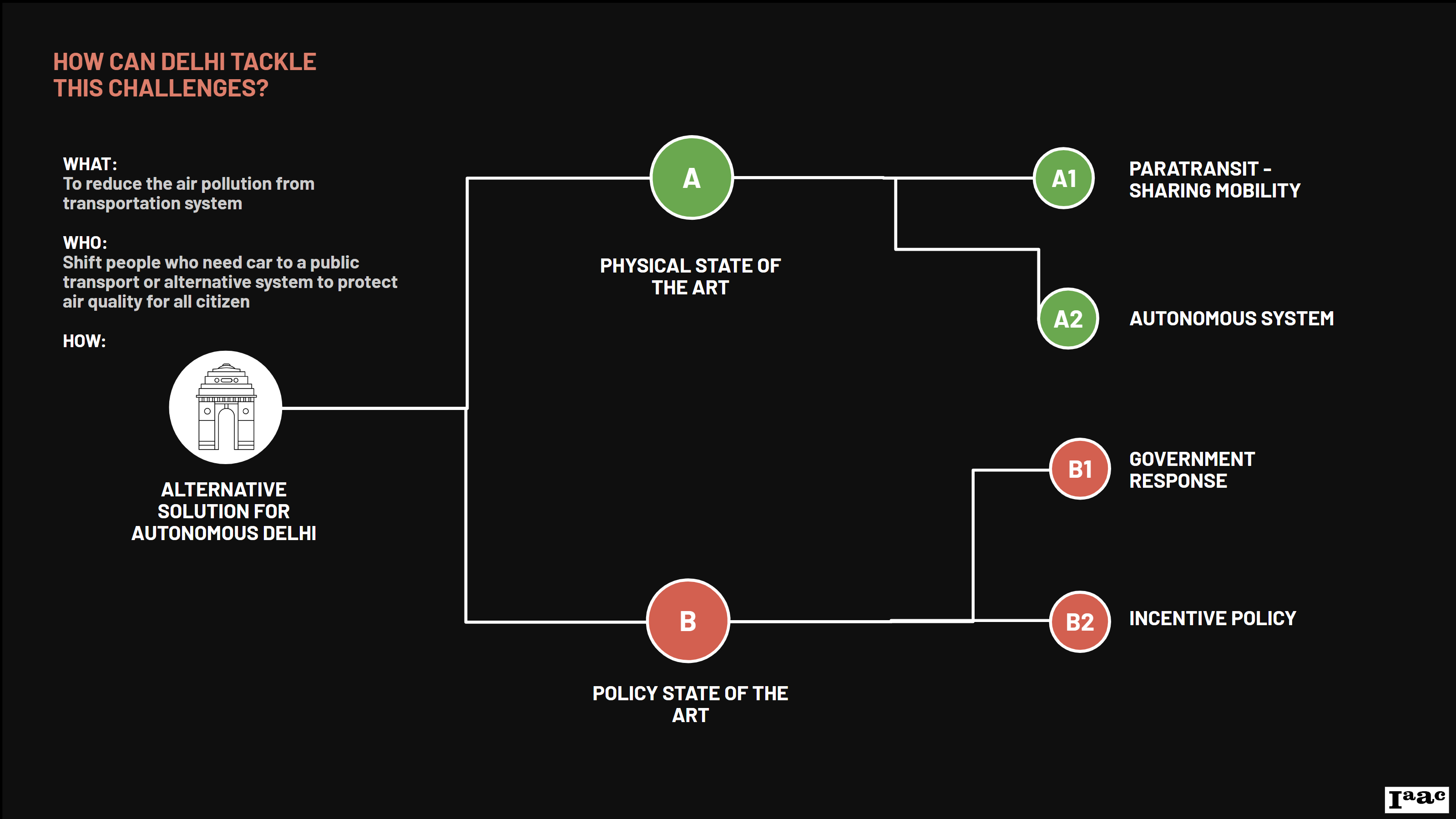
3.1. Physical State of the Arts
3.1.1. Paratransit Systems
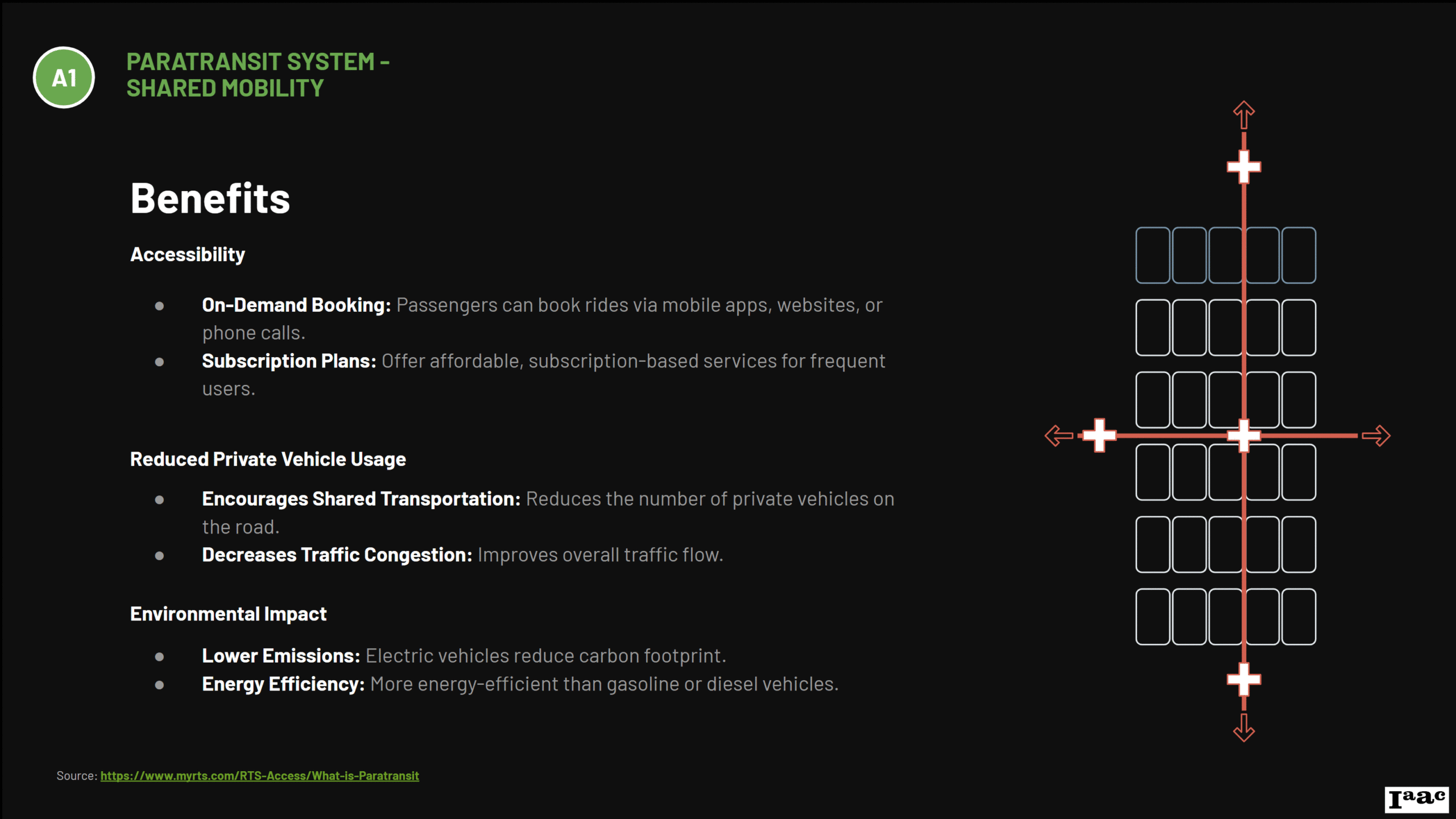
What is a Paratransit System?
A paratransit system provides flexible, demand-responsive transportation using smaller vehicles like vans or minibuses, catering primarily to those with mobility challenges or limited access to conventional public transport. Passengers book rides via phone, apps, or online platforms, usually needing to book 24 hours in advance. The system schedules rides based on these requests, optimising routes with dynamic scheduling software. Vehicles offer curb-to-curb or door-to-door service, and fares are generally subsidised, varying based on distance or service type.
Paratransit services help reduce the load on public transportation by serving low-demand areas and providing first-mile/last-mile connectivity. This diversion of trips from main transit systems helps decrease traffic congestion by reducing reliance on private vehicles and increasing shared rides.
Delhi experiences significant traffic congestion and high demand for public transport, especially in densely populated and suburban areas.
3.1.2. Autonomous Vehicles
Autonomous vehicles (AV) are transport capable of sensing its environment and operating without human involvement, by using a combination of sensors, cameras, radar, and artificial intelligence (AI) to navigate and drive. These technologies enable the vehicle to understand and interpret the road environment, detect and avoid obstacles, and make decisions to safely transport passengers or goods from one location to another. The category of AV is not a binary one, instead it’s generally accepted that there are 6 levels of autonomy, which range from no automation, where the human is completely in control of the driving in all aspects, to full autonomy, where the vehicle does not use any human input.
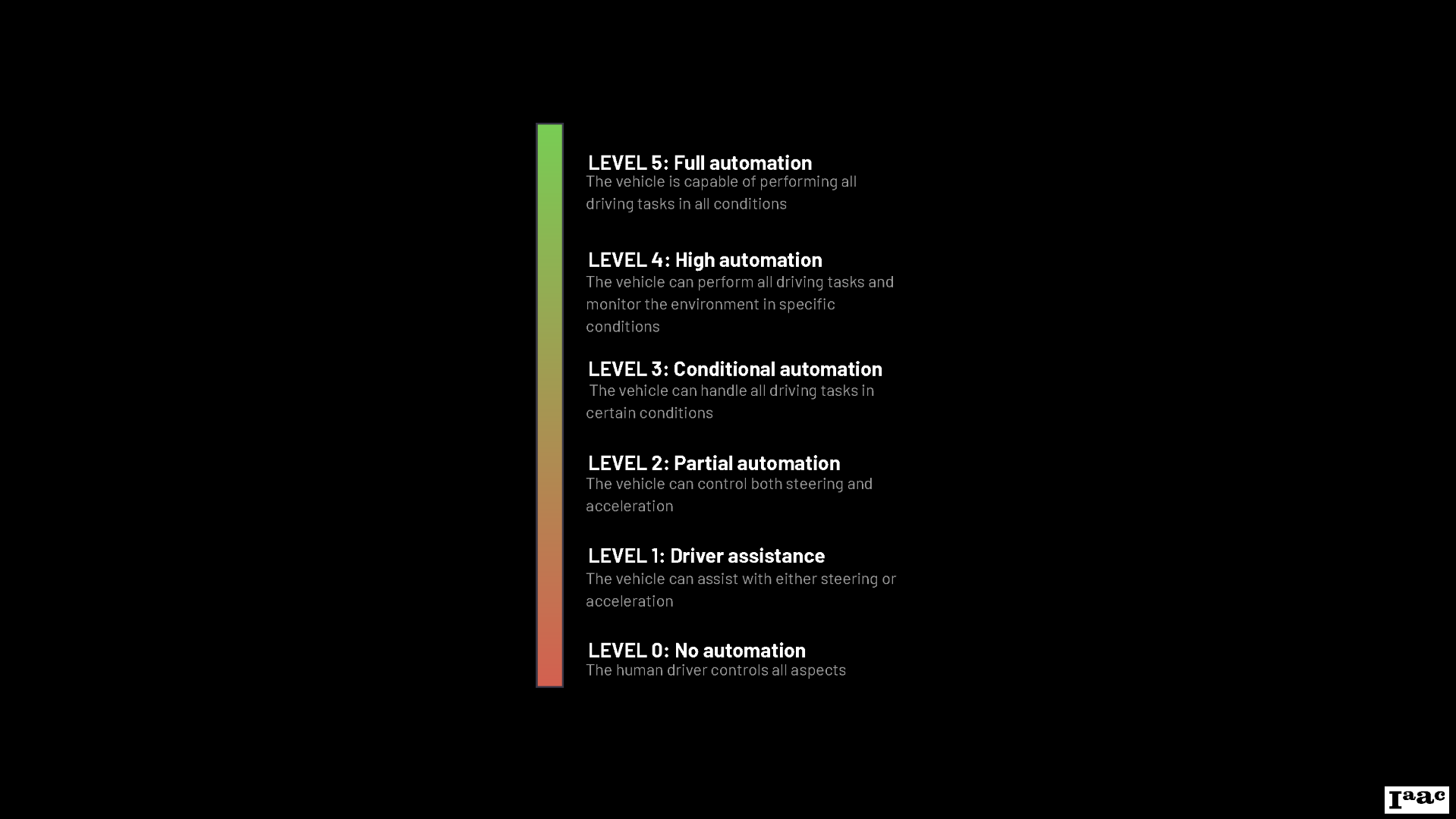
Current exploration with AVs has mainly been about private cars, but there’s been a rising trend in the testing of autonomous technology for small public transportation and shared mobility. The FABULOS (Future Automated Bus Urban Level Operation Systems) project is an example of this new trend. The project focuses on how cities can use automated buses in a systematic way, and in demonstrating AVs’ viability as a first/last-mile solution, improving efficiency and access. So far, FABULOS, has had pilot tests in Gjesdal, Tallinn, Helsinki and a few other European cities.
Autonomous vehicles are still an area of research, and currently fully autonomous (Level 5) autonomous vehicles aren’t feasible. Being that it’s a technology currently being developed and in constant evolution, they’re the subject of many discussions about their usefulness and ethics, which results in a long list of possible advantages or disadvantages of this technology.
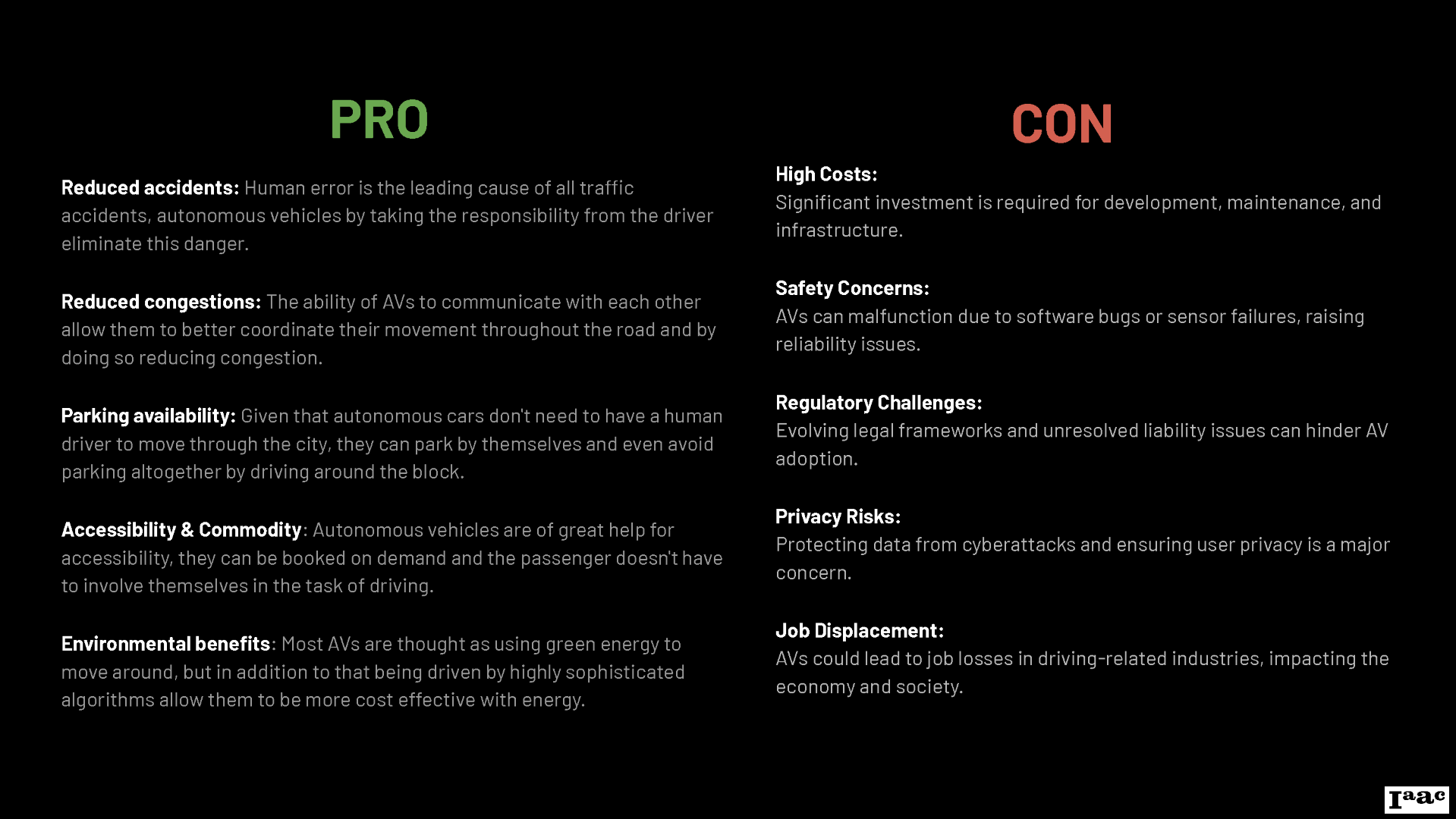
3.2. Policy State of the Arts
3.2.1. Policies to combat Pollution
The Delhi government implements a variety of traffic policies to reduce air pollution in the city, addressing both vehicular emissions and traffic congestion. These traffic policies are mostly temporary for when the air quality index of the city spikes up to be hazardous for the citizens of Delhi. However, these policies are excellent inspiration of how the government takes actions to combat air pollution within the transportation hotspots of the city. The policies are:
3.2.1.1. Odd-Even Rule:
This traffic rationing scheme restricts private vehicles with odd-numbered license plates and even-numbered license plates to alternate days on the road. This is mostly implemented during periods of severe air pollution to reduce the number of vehicles on the road by approximately half.
However the results of this policy were short-term reduction in traffic congestion, marginal impact on air quality, and increased use of public transport. Overall, while the Odd-Even scheme has some positive effects, its impact on Delhi’s air pollution problem is limited and highlights the need for comprehensive and sustainable measures to address the city’s air quality issues.

3.2.1.2. Carless Days:
Car-free days in Delhi, like the Odd-Even scheme, aim to reduce vehicular emissions and improve air quality, but their effectiveness has also been varied. However the effect of this policy led to community engagement but with very little impact on air pollution reduction. This also empowered people to use more of sustainable modes of transport like the Metro and the Buses.
3.2.2. Incentive Policy
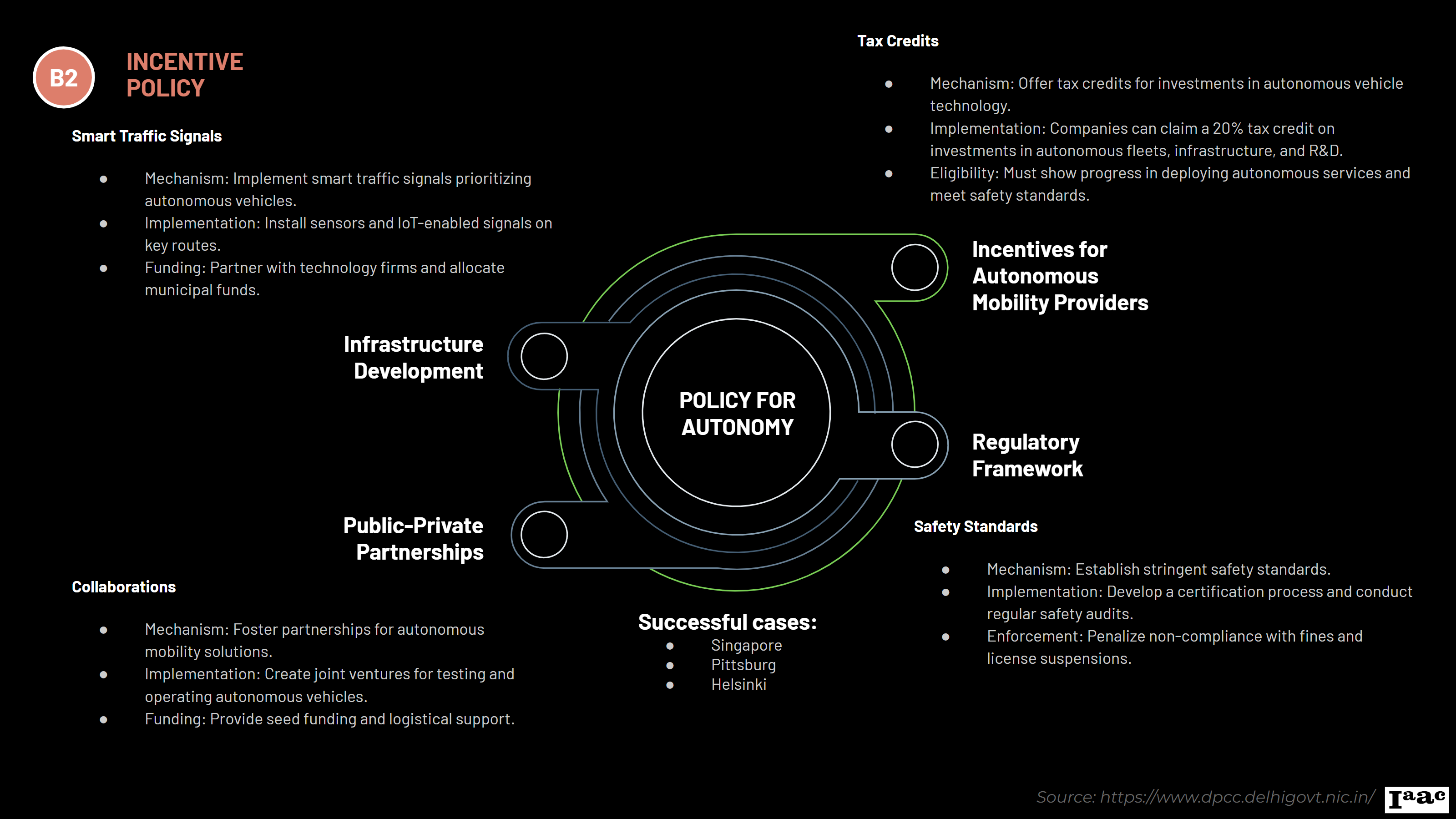
Incentives for Autonomous Mobility Providers
Tax Credits
- Mechanism: Offer tax credits for investments in autonomous vehicle technology.
- Implementation: Companies can claim a 20% tax credit on investments in autonomous fleets, infrastructure, and R&D.
- Eligibility: Must show progress in deploying autonomous services and meet safety standards.
Subsidies
- Mechanism: Provide subsidies to offset deployment costs in underserved areas.
- Implementation: Subsidies cover up to 50% of costs for deploying autonomous vehicles in targeted areas.
- Eligibility: Providers must operate in designated areas for at least five years.
Infrastructure Development
Dedicated Lanes
- Mechanism: Develop dedicated lanes for autonomous vehicles.
- Implementation: Identify key routes and designate lanes with road markings and signage.
- Funding: Budget from urban development funds.
Smart Traffic Signals
- Mechanism: Implement smart traffic signals prioritizing autonomous vehicles.
- Implementation: Install sensors and IoT-enabled signals on key routes.
- Funding: Partner with technology firms and allocate municipal funds.
Public-Private Partnerships
Collaborations
- Mechanism: Foster partnerships for autonomous mobility solutions.
- Implementation: Create joint ventures for testing and operating autonomous vehicles.
- Funding: Provide seed funding and logistical support.
Funding
- Mechanism: Allocate funds for R&D of autonomous technologies.
- Implementation: Establish grants and financial assistance for startups and research institutions.
- Eligibility: Demonstrate potential for commercial deployment.
Regulatory Framework
Safety Standards
- Mechanism: Establish stringent safety standards.
- Implementation: Develop a certification process and conduct regular safety audits.
- Enforcement: Penalize non-compliance with fines and license suspensions.
Operational Guidelines
- Mechanism: Develop clear operational guidelines and protocols.
- Implementation: Publish detailed guidelines and regularly update them.
- Review: Update guidelines based on technological advancements and feedback.
4. Proposal
A Public Transport AV System would add two new entities to the current mobility network of Delhi: a fleet of AVs and a central control unit or “Hive Mind”.
The fleet of AVs would consist of a group of small autonomous electric buses with a capacity for XX amount of people. These AVs possess two types of behaviour based on the demands of mobility and the peak hour times, that define the way they service the city. They directly work with the citizens as passengers, and indirectly act as an assistance for existing public transport.
The “Hive Mind” would involve a central control unit, which gathers data about the current state of the mobility of the city, and makes in real time decisions on how to distribute the fleet of AVs through the city in order to better accommodate its transportation needs.
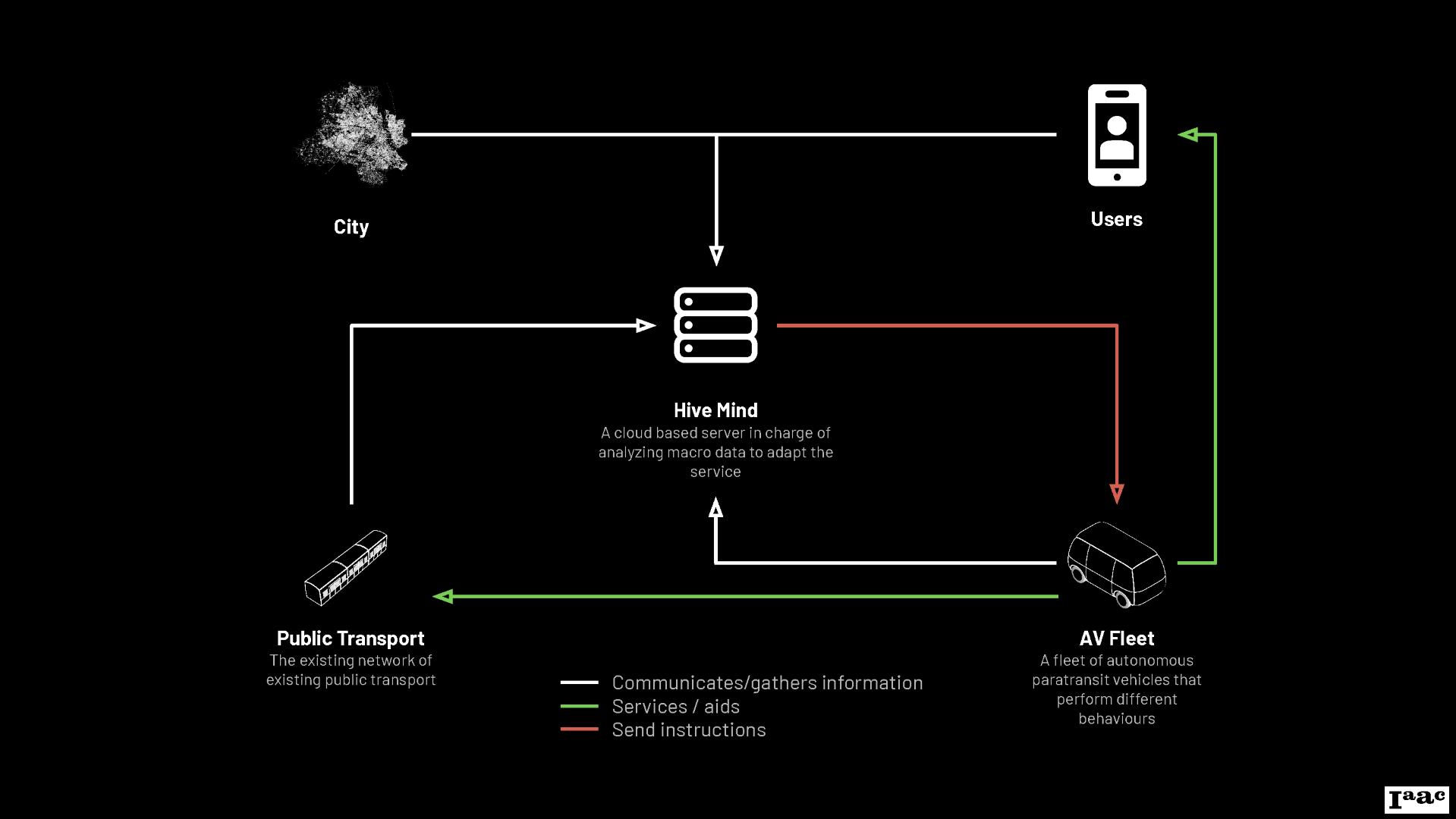
4.1. Pooling and Route Concatenation
The first and main behaviour of the Public Transport AVs is to provide short distance and/or first-mile transportation by functioning like an on-demand small bus that can be requested by users.
To truly replace current systems like Ubers & Tuk-tuks, and contribute to the reduction in the number of vehicles on the city, the AVs take advantage of Delhi’s citizens familiarity with carpooling, and concatenates in real time multiple similar trip requests creating a single optimized route that reduces the amount of total travel without extensively extending travel time.
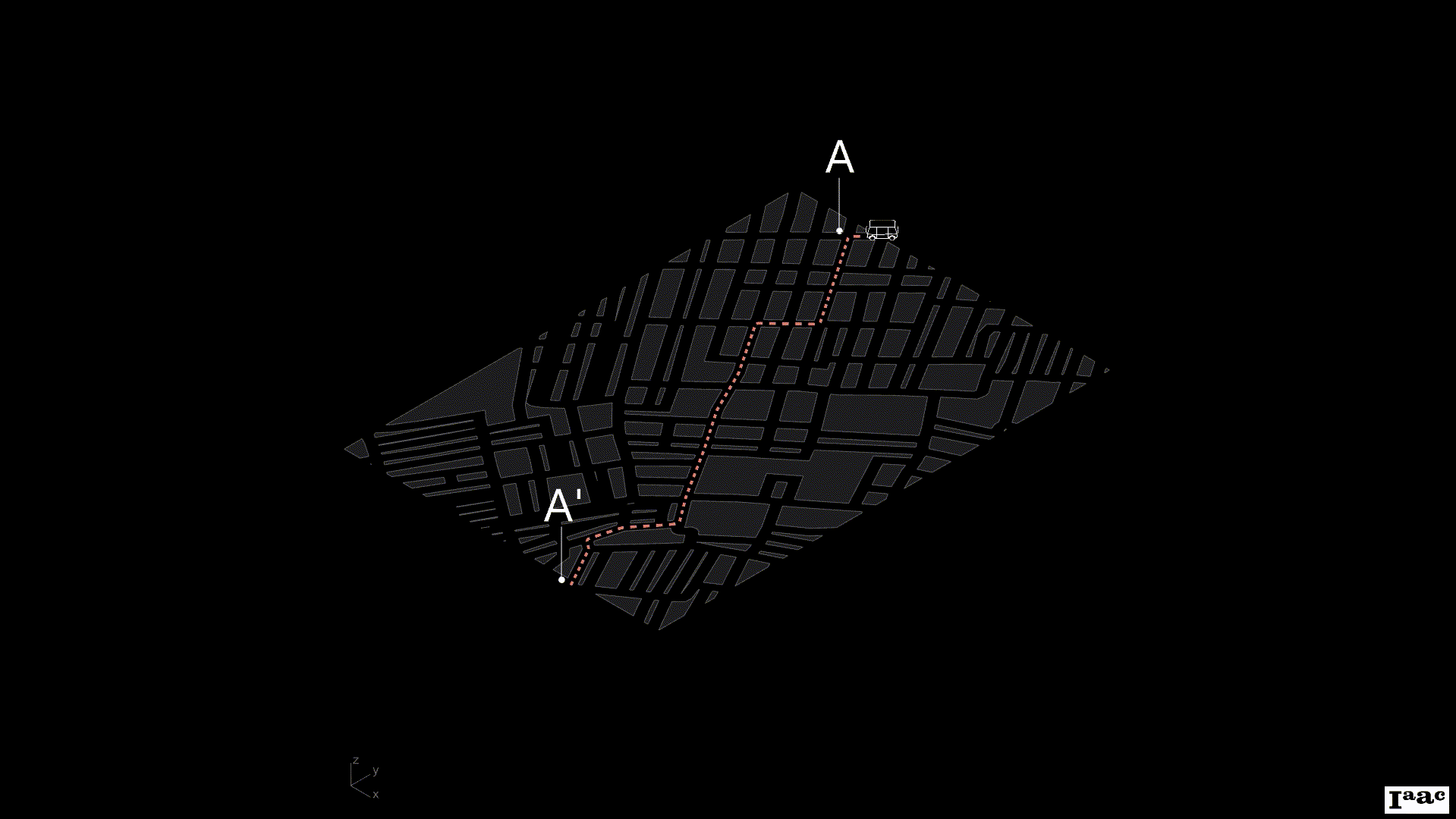
4.2. Metro commuter redirection
The second behaviour of the public transport AVs is to aid Delhi’s subway system during peak hours, by serving commuters that would use the metro for a few stations and thus freeing capacity.
This synergistic relation between the subway and the AVs system is possible because the strength of each system lies on the weakness of the other. While the subway as a means of transportation is the most efficient for long distance travel the small AVs excel at short distance trips.
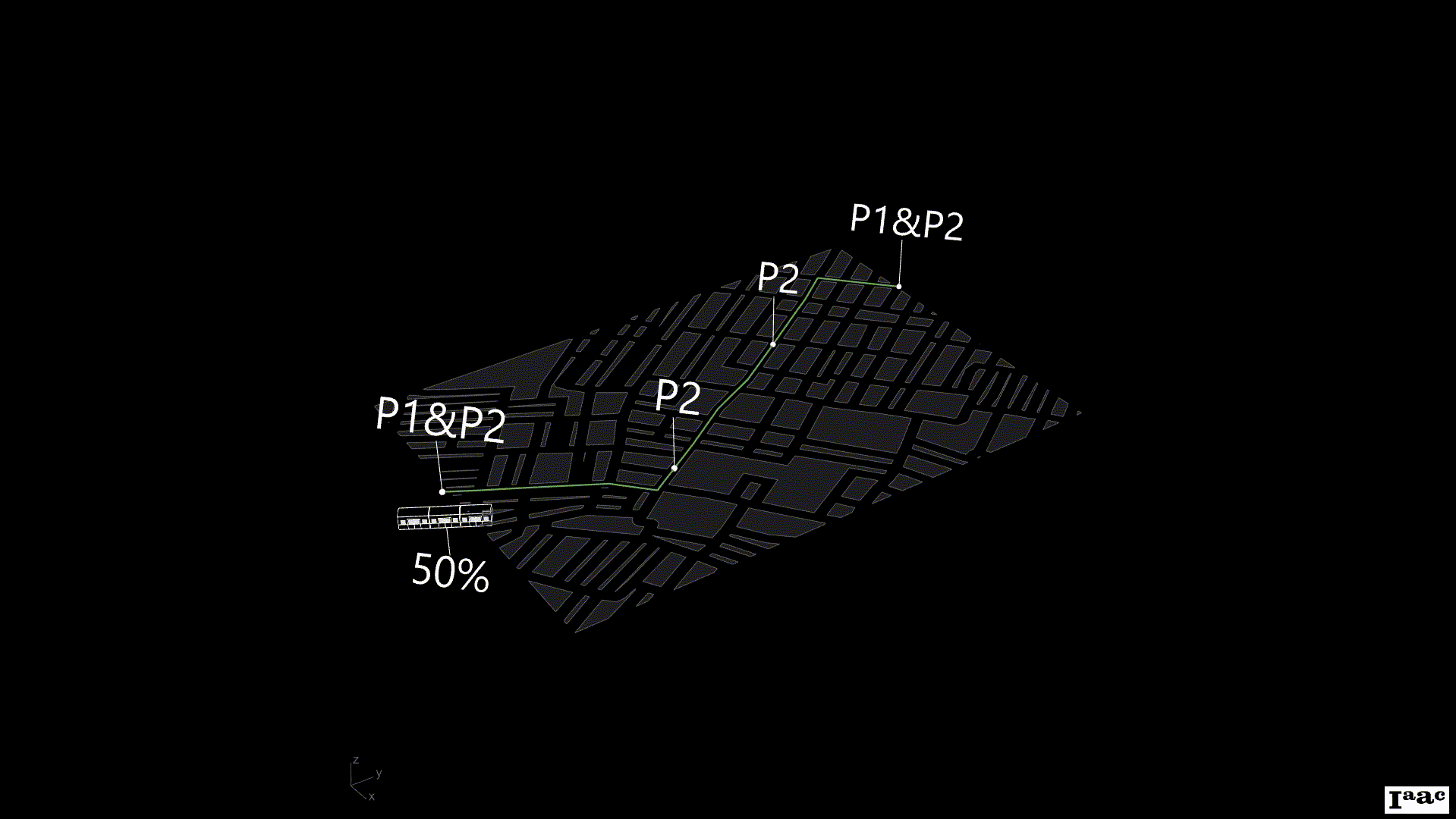

4.3 Demand fitting
A distinguishing characteristic that the Public Transport AV system has due to being an autonomous system, is its ability to serve the demand throughout Delhi.
Each vehicle not only has a local “brain” that allows it to come up with efficient routes to serve the it’s passengers but it’s also in constant communication with a “hive brain” that processes the data of the entire fleet of AVs as well as other traffic data. This hive mind uses said information to understand the movement of people around the city and redistributes the fleet to better accommodate the demand for mobility.
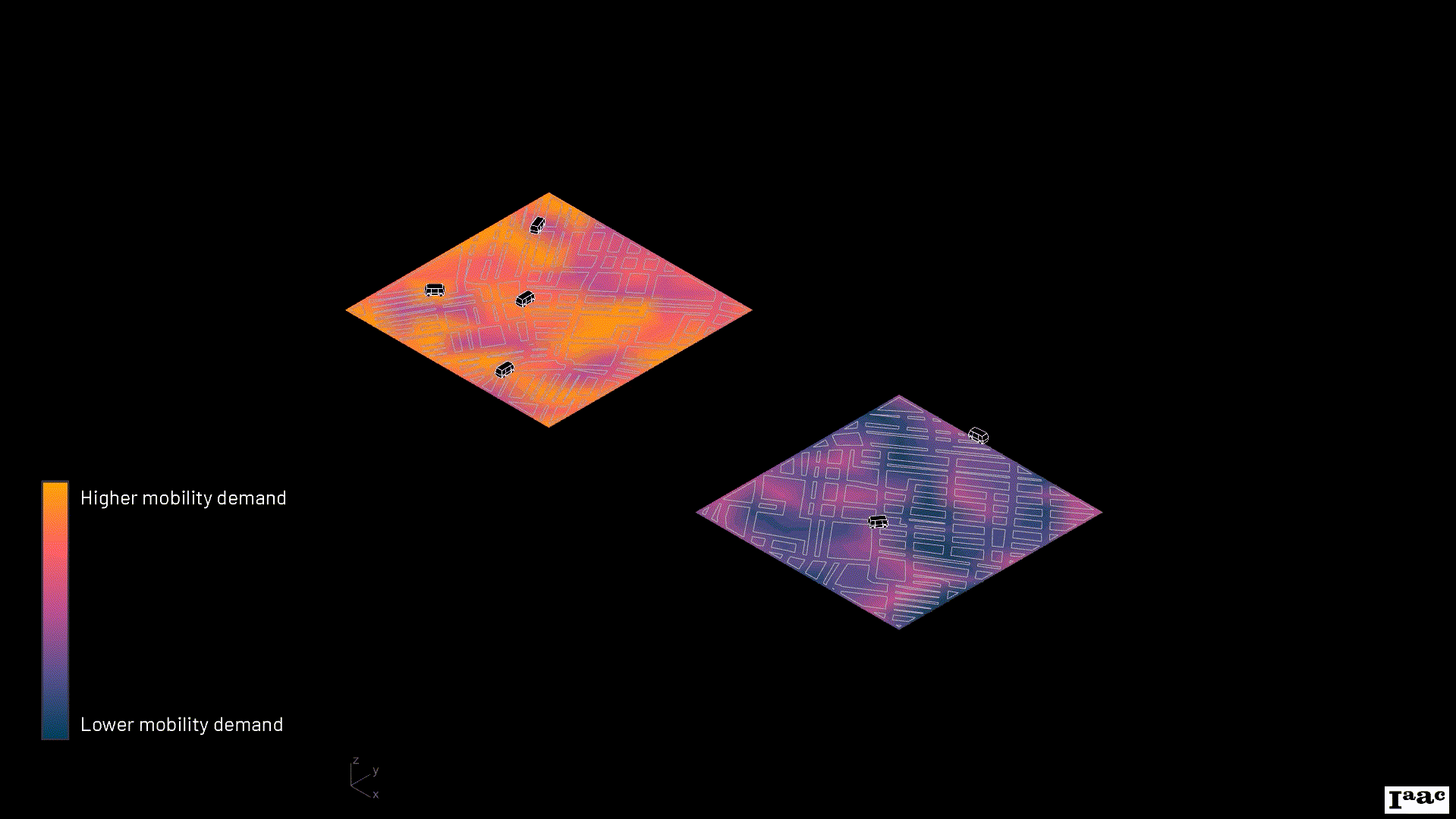
4.4. Deployment Scenario
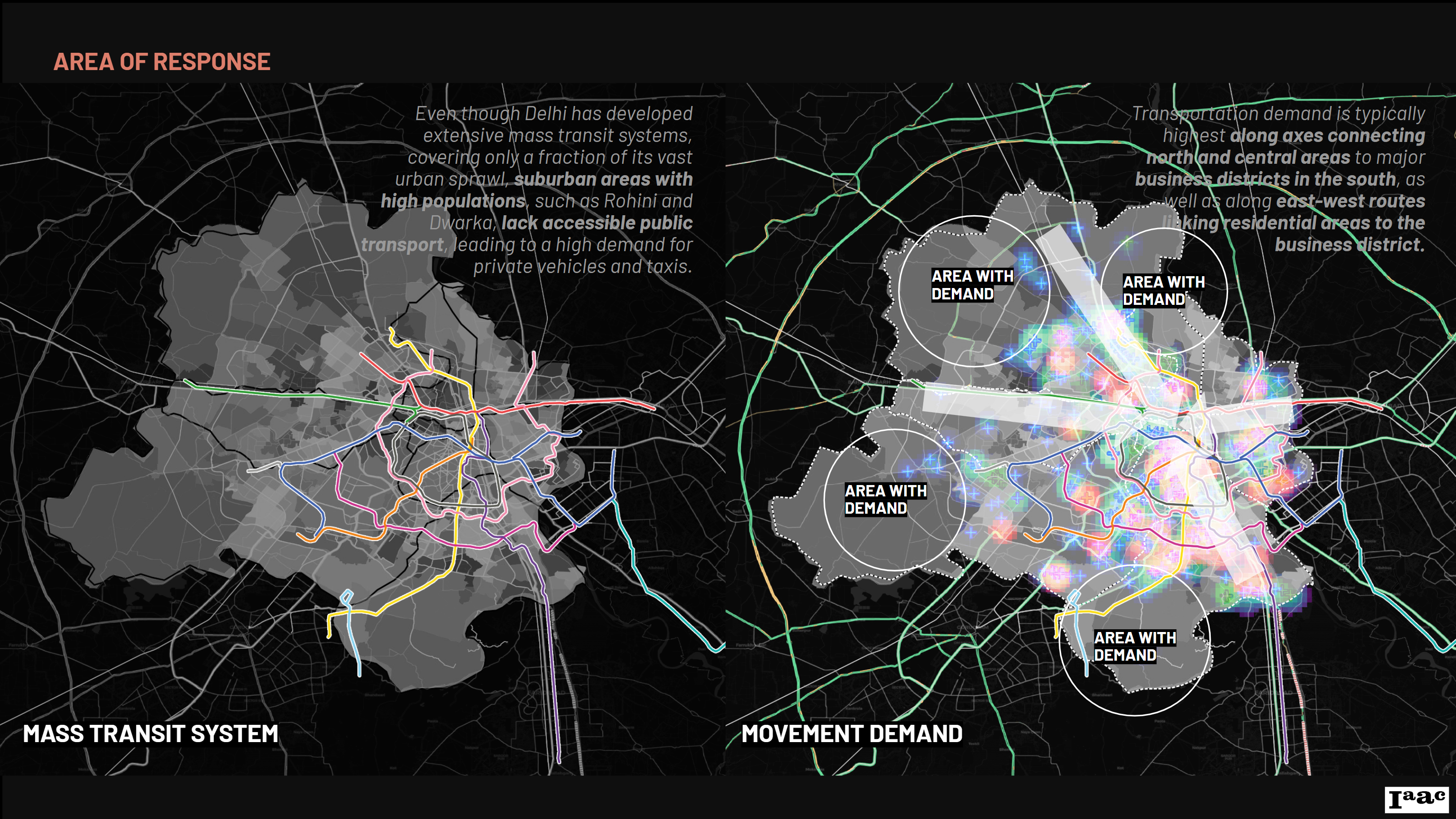
The context of urban development and infrastructure reveals a city grappling with rapid population growth, urban sprawl, and socio-economic disparities. As one of the most populous cities globally, with over 31 million residents, Delhi faces significant challenges in providing equitable access to basic services, including transportation, housing, and healthcare.
vulnerability in terms of mass transit accessibility primarily affects districts and neighborhoods that are underserved or poorly connected by public transportation. These areas often face challenges such as:
- Outer and Peri-Urban Areas: Districts on the outskirts and peri-urban fringes of Delhi, such as parts of North and Northwest Delhi (e.g., Sultanpuri, Nangloi), often lack sufficient access to metro or bus routes. Residents here may rely heavily on private vehicles or informal transport, leading to increased traffic congestion and environmental impacts.
- Informal Settlements: Neighborhoods with informal settlements, like parts of East Delhi (e.g., Seelampur, Shahdara), may have limited or irregular access to formal mass transit systems. This can restrict mobility options for residents, impacting their access to employment, education, and essential services.
- Historic and Dense Urban Cores: Despite their central locations, historic areas like Old Delhi (Shahjahanabad) may have narrow streets and limited space for modern transit infrastructure. This can pose challenges for retrofitting mass transit solutions and accommodating growing urban populations.
- Rapidly Urbanizing Areas: Regions experiencing rapid urbanisation, such as parts of South Delhi (e.g., Sangam Vihar, Mehrauli) and the Trans-Yamuna area (e.g., Laxmi Nagar, Mayur Vihar), face the dual challenge of balancing infrastructure development with population growth. These areas require proactive planning to ensure adequate mass transit options as they expand.
5. Conclusion
To answer the initial question we evaluate the possible benefits that a Public Transport AV System could have on the current state of emissions in Delhi. For this benchmarking of the Public Transport AV System, first we calculate a baseline estimation of the current CO2 emission of the city, and another estimation where the number plate policy -that Delhi already applies in certain occasions- is applied all year long. With both of these baselines then we create three different scenarios for the implementation of the AV system which change the percentage of deployment of the vehicles: 25% of private vehicles (Tuk-Tuks and Taxis) are replaced by AVs, 50% and 100%. For each of these three scenarios the CO2 emissions are computed to compare with the baselines and evaluate the improvement.
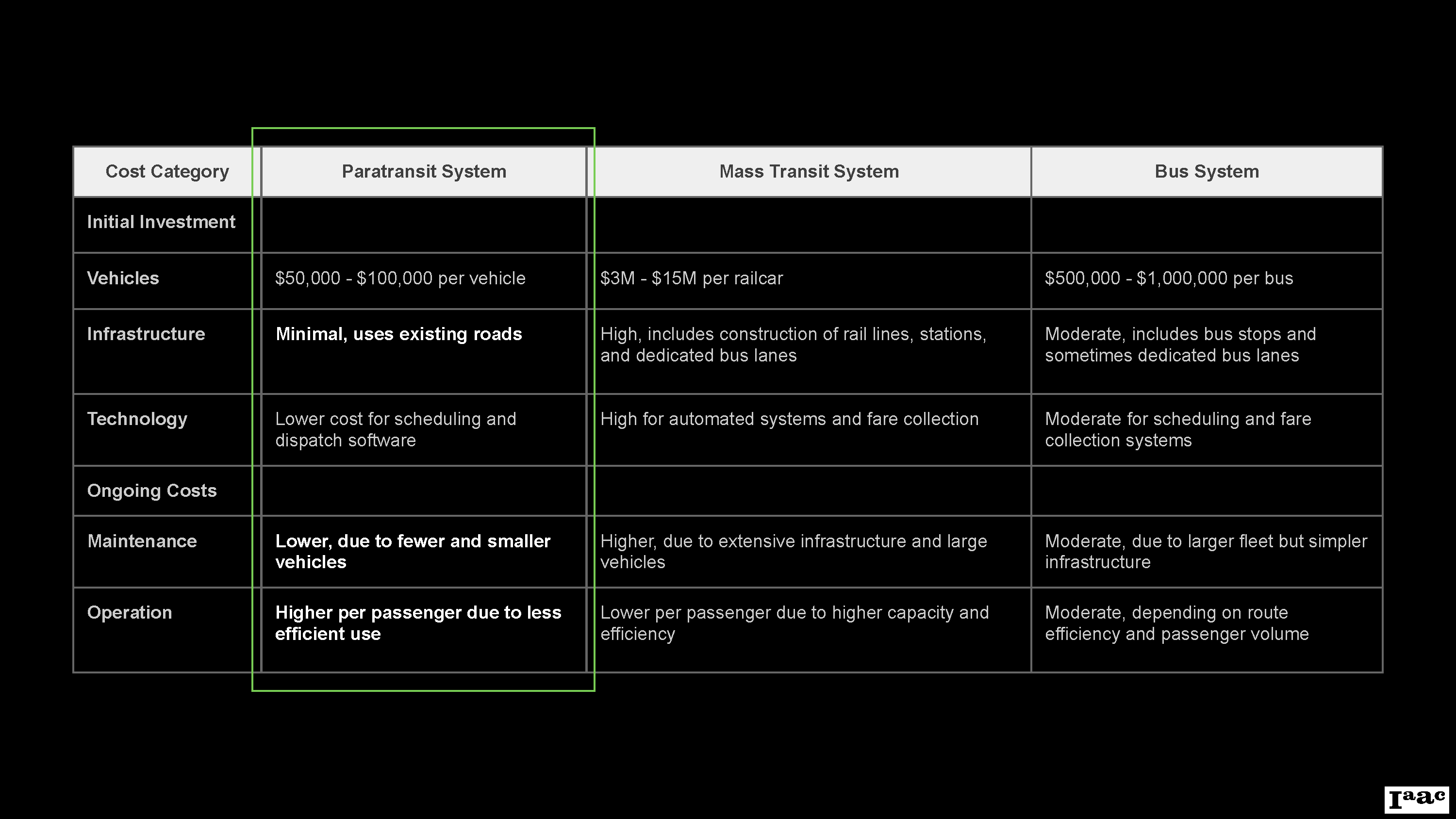
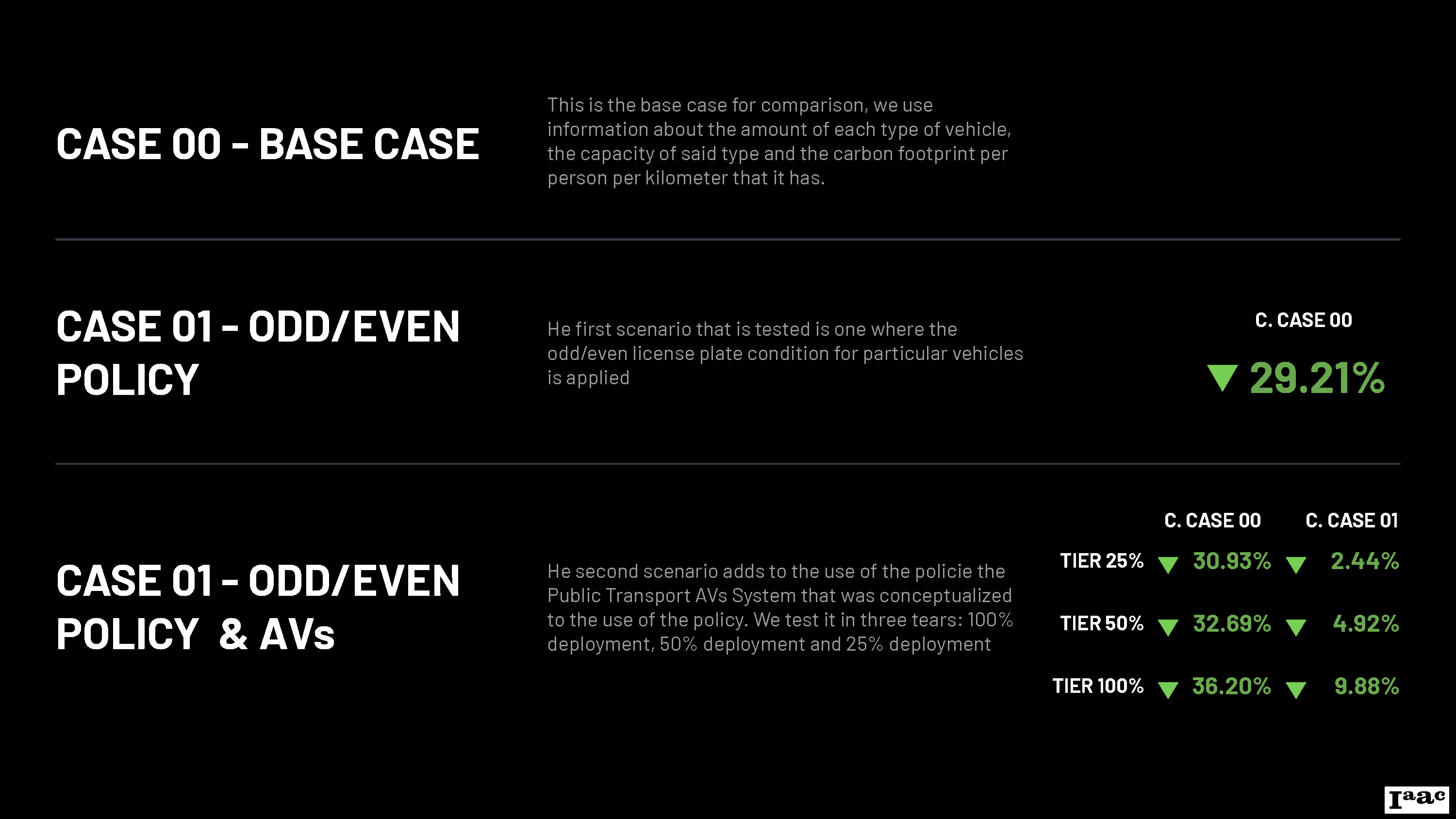
From the estimation comparison it is possible to see that the autonomous vehicles for public transportation have a beneficial effect on Delhi’s current emissions and the positive effect that it has is linearly proportional to the percentage of deployment of the AVs. Nevertheless the evaluation also shows that the effect that the system has is marginal compared to the benefits of the policy which can have the most impact.
The results make evident that AVs can be thought of as a future of transportation that will lower carbon emissions of the city of Delhi, but that it’s crucial that these changes are accompanied with further policies to maximize the positive effect on the environment the system can have.

